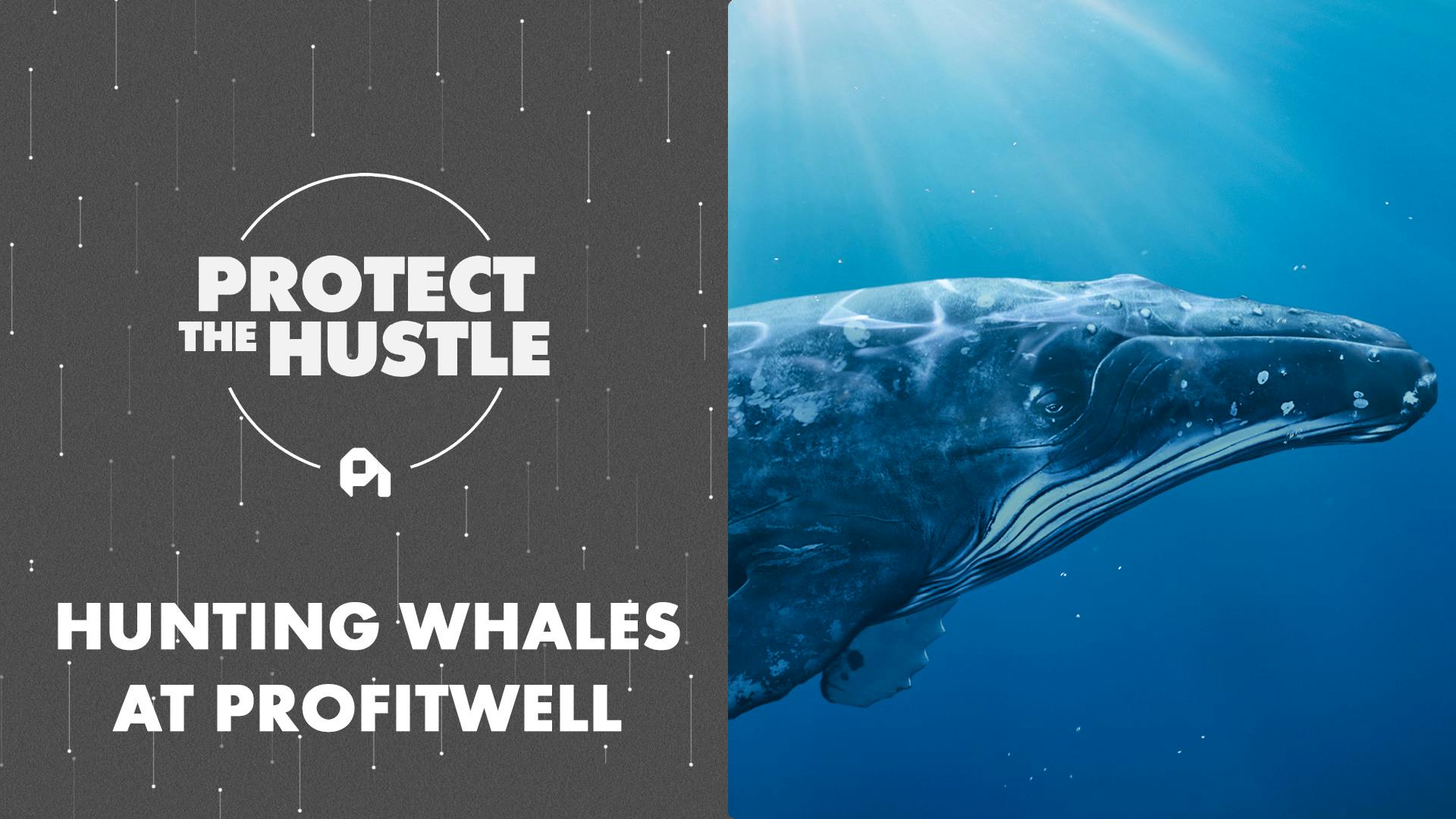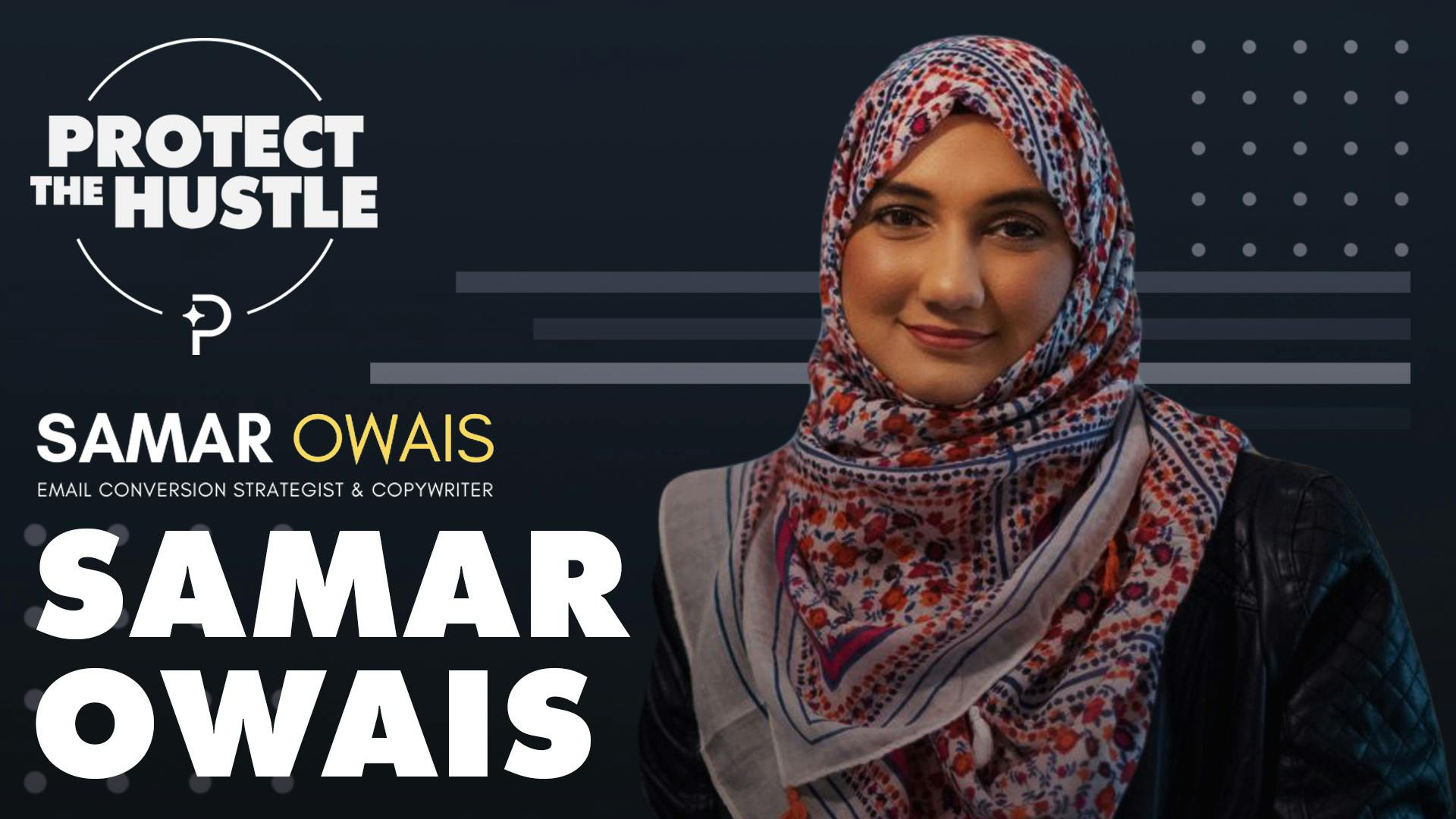
B-Side: How donations increase subscription retention
This episode might reference ProfitWell and ProfitWell Recur, which following the acquisition by Paddle is now Paddle Studios. Some information may be out of date.
Please message us at studios@paddle.com if you have any questions or comments!
Social Cause Impact
Over the past century we've gone through a few waves in purchasing behavior. After setting up infrastructure in the industrial revolution we entered a wave of mass production and consumerism. People could purchase lots of goods from a variety of options for the first time, and they took advantage of the shift. Suburbs blossomed and our consumptive economy boomed.
What comes after the foundations of consumption though? Well—choice.
Having the ability to purchase really anything you needed from a variety of options was great, but then came the waves of differentiation amongst picky consumers who started to care about a plethora of things. We saw the anti-mass production wave that cared about quality and craftsmanship. The "safe" wave that cared about which ingredients were going into the products we consume or use. We've even seen location waves for "Made in the USA" to support American workers to "Made in COUNTRY" as an indication of exotic or quality allure. After all, only great dutch oven's can come from Le Creuset in France, right? (Sarcasm intended).
While these waves come and go, persisting as generations move forward consuming, there are new waves we're heading into around social causes and identity. We're going to talk more about identity another time, especially since the retention and willingness-to-pay data sets around political affiliation are fascinating. Yet, social causes seem to be having a resurgence as millennials finally get some purchasing power and Gen Z follows suit.
Specifically, we're going to walk through how aligning your brand or product to a social cause can increase your retention and willingness to pay. We'll of course go through some great data to support these notions, as well.
Cause products: aligning with our will to help
First though, what's the theory here? It's actually pretty straightforward. Social media and the internet have connected us in ways we never thought imaginable. Some good. Some bad. One area of connection is to the problems happening around the world that impact groups we care about or humanity as a whole.
Decades ago we'd only hear about the Romanian adoption crisis or poverty in subsaharan Africa from news outlets. Today, non-profits and NGOs can put the problem front and center with a creative campaign and some ad budget. When this reach is mixed with a population that in aggregate is pretty well off and therefore has high empathy to wanting to solve problems, you have a recipe for consumers caring about the world.
We take it a step further though, not only in donating our time and money to causes, but also caring about the stances and causes of the products we buy. This manifests itself in fascinating social capitalism phenomena like the Spring of 2020 and the George Floyd protests, but also in how we compare options. After all, if quality is essentially the same between options, then why wouldn't I buy the product that's helping save the world?
I'm glossing over some major sociological and psychological concepts for the sake of expediency, but the data backs this up in some telling ways.
Products aligned with a cause have higher willingness to pay (WTP)
Let's first look at how willingness to pay is impacted when a product is aligned to a cause in some manner. We ran a study using ProfitWell's Price Intelligently product where we measured the willingness to pay for a number of baseline products in both consumer and B2B verticals. We then measured willingness-to-pay studies amongst similar respondents, but inserted a value proposition around the product being aligned to a cause. We then looked at the difference as displayed in the data below.
One important note here is that we measured two types of causes, a cause that wasn't aligned to the mission or use case of the product (ie. ProfitWell donating 1% of revenue to save the environment) and a cause where the use case and mission were aligned to the product (ie. a tampon subscription that donated feminine hygiene products to women in need based on purchases).
A couple of notes in the data:
- Notice how in both B2B and DTC the cause orientation did boost willingness to pay, roughly 5-10% in B2B and 6-20% in DTC
- When the cause is aligned to the mission or use case of the product, the willingness to pay jump is actually 2-3x the more tangential cause, especially in DTC where the willingness to pay jumps 22% over the median.
- If you're not doing this in DTC, you're missing out majorly.
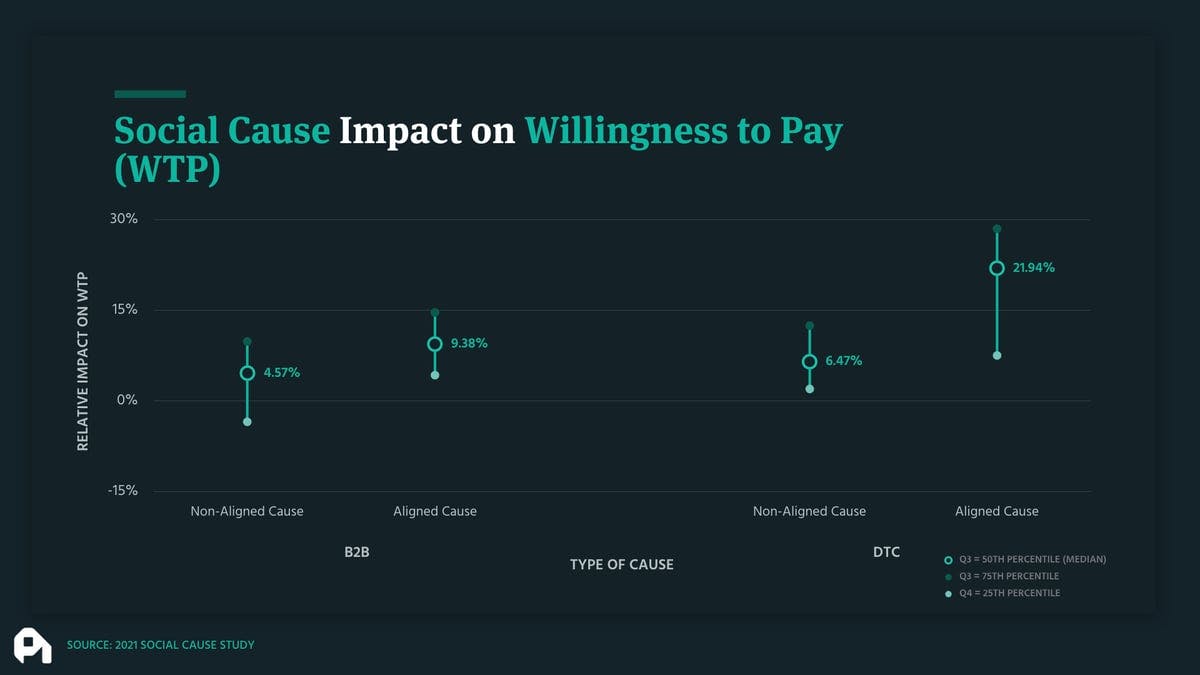
Asking for donations boosts subscription retention considerably
While brands have been aligning to a social mission for quite some time (Tom's shoes being one of the first prominent ones), some brands have taken things a step further in asking customers to actually donate to causes in addition to paying for their subscription.
In practice both B2B and DTC companies will prompt you in the checkout flow to add a monthly donation of $1 to $5 to support the cause. Other companies do this after the fact and say that X% of revenue or profit will go to the cause. While these companies may just be trying to do the right thing, these practices actually have some pretty stark impacts on subscription retention.
We looked at revenue retention of those companies either doing an implied donation or an explicit donation and compared their retention to companies that didn't do a donation or to customers who didn't take the company up on the explicit donation. The results were pretty fascinating:
- Customers who did an explicit donation had 9% higher revenue retention in B2B and 17% higher revenue retention in consumer products.
- Explicit donations tended to have much higher revenue retention yields than the implied donation. In B2B the difference was small.
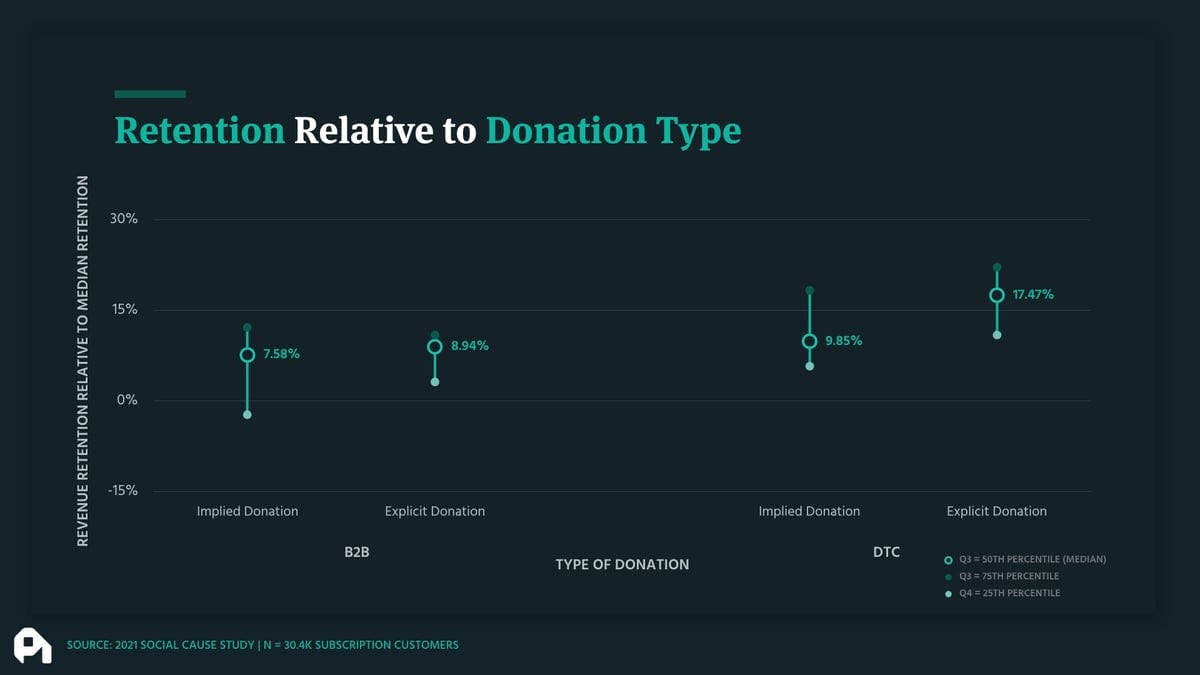
So what should you do with your subscription company?
As the data suggests, having an element of altruism can actually pay off financially, as well. Let's break down recommendations based on vertical.
In B2B:
- If you can find a way to do an aligned cause for your product—a restaurant fund for struggling restaurants if you're a restaurant management system—you should definitely do it. And try to add an explicit donation on top of your subscription, as well, even if it's a nominal amount. People like to feel good about their purchases and the more you bring them into a community, the better off it'll be for willingness to pay and retention.
- If you can't find an aligned cause, then I'm not sure it's worth the confusion. Sure, you could do something like Stripe and donate a certain percentage of sales to a cause of your choice, but a lot of this is what Stripe would do anyway. I think you should have a cause, because your business should be more than just making money, but based on these numbers I'm not sure I'd make that a front and center piece of your marketing strategy. Put another way—if it's central to your identity even if it's not aligned, go for it. If it's not, then do it on the back end.
In DTC:
- You're missing out on major gains if you're not doing something cause related. It's so easy to find an aligned cause for the products out there, because there are so many different groups. There should be no excuse for not running this strategy in some way. It's good branding. It's good from a numbers perspective. It's good for the world.
- I'd ask for donations in the checkout flow over just making things an implied donation after the fact. This is where the most gains are coming from in terms of retention.
Overall, I don't think cause and identity mindsets are going away for our customers anytime soon, so it's important to think through your strategy as the world becomes more and more competitive. There are obviously other implications for this phenomena that will impact recruiting and culture, but we can save those for another day. Also, keep in mind I'm looking at this from a specific lens around charitable aspects' impact on retention and willingness to pay. I obviously know there are other reasons to do this within your business.
Do us a favor?
Part of the way we measure success is by seeing if our content is shareable. If you got value from this episode and write up, we'd appreciate a share on Twitter or LinkedIn.
00;00;00;01 - 00;00;19;10
Patrick Campbell
My goal isn't to target your altruism. My goal is to target your pocketbook. And what's interesting is that when you couple a cause or a donation onto your subscription, it actually boosts willingness to pay. It increases your revenue retention. And then ultimately, it does make the world a better place from profit.
00;00;19;11 - 00;00;39;00
Ben Hillman
Well, recur. It's protect the hustle or we explore the truth behind the strategy and tactics of B-to-B SAS growth To make you an outstanding operator on today's episode, how charitable donations can increase your subscription Retention and Save the World. Patrick Take it away.
00;00;39;20 - 00;01;00;13
Patrick Campbell
Welcome back, everybody, to another episode of Protect the Hustle, the B-sides. The voice you're hearing is Patrick Campbell, co-founder of Proffer. Well, today we are going to be going deep into the world of charitable donations, as well as causes that align to your brand and what the impact is on willingness to pay as well as revenue retention. Before we get there, a couple of housekeeping items.
00;01;00;13 - 00;01;18;25
Patrick Campbell
We are hiring like crazy. If you ever wanted to work with us or me and learn kind of all the secrets in a nice, high paced environment, feel free to hit me up. If you know someone who would be interested, if you aren't interested yourself, feel free to send them my way as well. We got all kinds of roles in Boston, Salt Lake City and Rosario, and then sales and engineering roles.
00;01;18;25 - 00;01;38;29
Patrick Campbell
We can also take remote. Next up, we're actually thinking of forming a formal community for profile users, as well as readers and listeners of our content. And basically what I want to know is, is that a good idea? Do you think that that's a terrible idea and we're going to try to do this right? Right. Meaning we're not just going to like throw a Slack community out there or some Facebook group, although that might be how it ends up manifesting it.
00;01;38;29 - 00;01;53;24
Patrick Campbell
But would you be interested in something like that, assuming we do it right? And if so, like what is doing it right mean to you? Is there a community or trade group that you found valuable that you're already a part of? If so, what is that group? Why is it valuable? Does it matter if it has anything to do with, you know, subscription revenue?
00;01;54;03 - 00;02;12;09
Patrick Campbell
You know, we want to learn from, you know, people who are doing this right. And why they're doing it right. And then lastly, appreciating so much all of the social media shares and of course, the feedback. Keep it coming. Shout out to Apollo, Andrew, Stephen Darshan, Tiffany Lewis, Harry Heaton, Bill Kiss, Alessandra, Nick and Ryan, who all share the socials.
00;02;12;09 - 00;02;28;21
Patrick Campbell
And with that, let's jump into charity. So if we take a huge step back, I want to kind of set the stage here. And if you really think about purchasing behavior, it doesn't really matter the types of products, purchasing behaviors kind of followed similar trends. But over the past century, we've gone through a few waves of purchasing behavior.
00;02;28;28 - 00;03;01;11
Patrick Campbell
So after setting up infrastructure in the Industrial Revolution, we entered this wave of mass production and consumerism. People could purchase lots of goods from a variety of options for the first time, and they took advantage of the shift. You saw suburbs basically blossom in our consumptive economy in the United States, basically boomed and this is where you saw, like, you know, Hallmark cards, 80 different versions of birthday cards, wallpaper, carpeting, you know, TV dinners, all of these different things that we wouldn't have, you know, imagined 50 years prior just coming to us in a multitude of different options.
00;03;01;11 - 00;03;24;10
Patrick Campbell
Right. And so the natural question, as you know, things kind of evolved was what comes after the foundations of consumption. And what economists have posited, and I'm positing as well, is this whole concept of choice. So having the ability to purchase really anything you needed from a variety of options was great. But then came the ways of differentiation amongst really picky consumers who started to care about all kinds of things.
00;03;24;21 - 00;03;46;06
Patrick Campbell
We saw this anti mass production wave that cared about quality and craftsmanship. We saw the safe way of which cared about which ingredients were going into the products we consumer use. And then we've even seen multiple location waves where wanted things to be made in the USA to support American workers or, you know, made in ex country, which was an indication of either exotic or quality allure.
00;03;46;06 - 00;04;02;09
Patrick Campbell
Right. So if you think about, you know, Dutch ovens and kind of really good bakeware, you think of Le Creuset in France and I'm probably pronouncing that incorrectly, but the basic idea is it's like that's an image of quality. If it was an American made version or if it was a Brazilian made version, it just wouldn't be as good, right?
00;04;02;09 - 00;04;29;08
Patrick Campbell
Because that branding about being made in France and having some sort of allure basically took place then, you know, while these waves come and go and they've had multiple sub waves and kind of resurgence here and there. What's really interesting is that there's these new waves that we're heading into and social causes and identity, and we're going to be talking more about identity another time, especially since, you know, retention and willingness to pay looks really fascinating in the context of political affiliation.
00;04;29;21 - 00;04;49;20
Patrick Campbell
But we're going to talk about social causes because they seem to be having a resurgence as millennials finally get some purchasing power. And of course, Gen Z is following suit as well. And specifically, we're going to walk through how aligning your product to your brand, to a social cause can actually increase your retention in willingness to pay and will, of course, be going through plenty of data to support these notions.
00;04;49;28 - 00;05;02;02
Patrick Campbell
And if you want to get the data, I'm going to talk through it. If you're only listening to the audio version here, but you can go to protect the hustle dot com and either just get it on a one time basis or you can sign up and get the posts and all the data every single week delivered right to your inbox.
00;05;02;12 - 00;05;18;19
Patrick Campbell
So let's jump in a little bit further here. In first, I want to talk about the theory. What is the actual theory? Why does this make sense? Well, it's actually pretty straightforward. So if we take kind of a high level look, social media, the Internet, have connected us in ways that we never thought imaginable. And some of these have been good and some of these have been bad.
00;05;18;19 - 00;05;47;07
Patrick Campbell
And people have talked ad nauseam about good and bad. Now, one area, though, that's interesting for this discussion is that if problems exist all across the world, we are now able to be connected to all of those different things that either impact groups that we care about or humanity as a whole. Decades ago, we would only hear about the Romanian adoption crisis or poverty in sub-Saharan Africa from news outlets, and there was only so much news out there.
00;05;47;07 - 00;06;16;22
Patrick Campbell
So a lot of these causes weren't really shown and the causes didn't really resonate with us. There was kind of like one shot for that cause to get out there. But today, nonprofits and NGOs can basically put the problem front and center with a creative campaign and just some basic ad budget. Right? And when this reach that social media has caused and in just media in general is mixed with a population that in aggregate is pretty well-off and therefore has high empathy to wanting to solve problems.
00;06;17;03 - 00;06;38;13
Patrick Campbell
You have this recipe for consumers caring about the world. Now, this is the difference between Gen-X boomers and millennials and Gen Z. If you think about a lot of millennials and Gen Z, they didn't even have the context of the Iraq war. Their problems have been social base. Their problems have been, you know, kind of globally based, whereas previous generations we had actual like struggles.
00;06;38;22 - 00;07;07;11
Patrick Campbell
And I'm not saying that in, you know, kind of individual level, like we don't have struggles. I'm saying in aggregate we're looking at a world where like there was a lot different context for people that were born in the early eighties and further back then, people who were born in the late eighties, let alone the 2000s. And so barring, you know, the financial crisis, which didn't feel hurt compared to some of these other problems we have this like somewhat affluent, you know, society compared to, you know, 20, 30, 50 years ago.
00;07;07;25 - 00;07;40;15
Patrick Campbell
And all of a sudden they care a lot. And those causes are all in their faces. Right. And what's fascinating about this is that if we take it a step further, we're not only donating our time and money as millennials and Gen Z, but we're also caring about the stances that the products we buy have as companies. Now, this manifests itself in really fascinating social capitalism phenomena like the spring of 2020 and the George Floyd protests, where you had lots of people caring like, Hey, you haven't made a statement about this, therefore I don't want to buy your product.
00;07;40;16 - 00;07;57;23
Patrick Campbell
We can definitely, you know, debate how big of a phenomenon that actually was, but it was big enough that big companies, small companies all, you know, were trying to figure out how they were actually supposed to kind of talk, you know, in the context of these things. And maybe the answer was actually, they shouldn't have talked. But that's a whole nother article.
00;07;57;23 - 00;08;14;13
Patrick Campbell
But it's also how we compare options, right? So it's not just this social capitalism phenomena that we talked about, but also the actual options we look at. So after all, if all things are equal, meaning equality is basically the same between different options, the products that we look at, then like, why wouldn't I buy the product? That's also, quote unquote, helping save the world.
00;08;14;13 - 00;08;33;02
Patrick Campbell
Now, whether they're actually saving the world or not is a whole different story, but it makes me feel good. And therefore I'm aligning my values with the products that I buy. And I'm glossing over a lot of major sociological and psychological phenomenon concepts here. And that's just for the sake of expediency. But the data backs this notion up pretty well.
00;08;33;02 - 00;08;45;29
Patrick Campbell
And so what we're going to do now is we set up some studies and some analyzes, both looking at willingness to pay as well as looking at retention. And I'll talk through these now. And of course, if you want the actual data sets, check out protect the hustle dot com or just the email if you get the email.
00;08;45;29 - 00;09;02;23
Patrick Campbell
And also listen. So let's first look at willingness to pay. And what we found essentially is that products that aligned to a cause have higher willingness to pay. And we're first going to look at a study we did using profiles, price, intelligence, the product where we measured the willingness to pay for a number of just products on a baseline.
00;09;02;23 - 00;09;27;27
Patrick Campbell
So these were consumer products and B2B products. We then basically measured willingness to pay amongst a similar group of respondents, but we overlaid the description of those products with additional value propositions around different causes. And then we looked at the difference between the baseline and then the cause oriented ones. And one important note here is that we measured two types of causes a cause that wasn't aligned to the mission or the use case of the product.
00;09;27;27 - 00;09;46;09
Patrick Campbell
So this would be, for example. Prof. A Well, saying that we're going to donate 1% of our revenue to save the environment, our products have nothing to do with saving the environment, but this would be like a cause that wasn't aligned to the use case of the product. And then the other cause we looked at is where the use case and the mission were aligned to the product.
00;09;46;09 - 00;10;04;15
Patrick Campbell
So this would be like a tampon subscription that also donated feminine hygiene products to women in need based on their revenue were based on the number of purchases that they get. And so basically looked at a baseline and then looked at adding clauses on top of it and then compared causes that were aligned and causes that weren't aligned just as a recap.
00;10;05;06 - 00;10;28;01
Patrick Campbell
So when we looked at the data, what's really, really fascinating is that in both B2B and indeed consumer products, the cause orientation, meaning the fact that the product had a cause did boost willingness to pay roughly by 5 to 10% in B2B and then in 6 to 20% in B2C. So there was a much, much higher lift when a DTC brand had some sort of cause orientation.
00;10;28;05 - 00;10;49;09
Patrick Campbell
Now, when the cause was aligned to the mission or the use case of the product, the willingness to pay was actually 2 to 3 X, the more kind of nonaligned clause basis. So to put that another way, when it was aligned, it would boost for consumer products willingness to pay by about 22% versus only about 6% when it wasn't aligned.
00;10;49;18 - 00;11;07;10
Patrick Campbell
And then in B2B, it would boost it about 10% compared to only 5% when it wasn't aligned. And so the kind of TLDR here and we'll talk about more specific business takeaways in a second is that if you're not doing this and you're a consumer product, you are missing out in a major way. I think there's some debate we'll talk about that in a second.
00;11;07;10 - 00;11;27;03
Patrick Campbell
If you're B2B, whether you should do this or not, mainly because it gets a little complicated, but I think that if you're a consumer product, this is a no brainer. And whether you were selling clothing goods, whether you're selling hygiene products doesn't really matter what you're doing. There is some cause that you can kind of put not only in front and center, but at least like within kind of your value proposition.
00;11;27;03 - 00;11;47;09
Patrick Campbell
Stack. Now let's talk about retention, because this is where it gets really interesting, whether you're B2B or a DTC product. And basically what we found not to bury the lead is that asking for donations actually boosts subscription retention quite considerably. So while brands have been aligning to a social mission for a while now, you know, you got Toms shoes basically being one of the modern prominent ones.
00;11;47;21 - 00;12;07;24
Patrick Campbell
Some brands have taken things a step further and asking customers to actually donate to causes in addition to paying for their subscription. So in practice, both B2B and B2C companies will wind up prompting you in the checkout flow to basically add a monthly donation of one dollars to $5, or sometimes it goes even higher to basically support a particular cause.
00;12;07;28 - 00;12;42;16
Patrick Campbell
Now, other companies will do this in a little bit of a implicit manner where they'll basically say that like, Hey, by the way, X percent of all revenue or profit is going to go to a particular cause. Now, while these companies may be, you know, trying to do the right thing here and trying to save the world, these practices actually have some pretty stark impacts on subscription retention, as I've already kind of told you, when we looked at revenue retention of companies either doing this implied donation a.k.a X percent of our profits goes to cause a or an explicit donation, meaning, hey, your product is $10, how about adding $1 per month in order to,
00;12;42;16 - 00;13;18;08
Patrick Campbell
you know, fight this bad thing or, you know, go after this particular cause? And then we compared their retention to companies that didn't do a donation or few customers who didn't take the company up on the explicit donation. So we're basically comparing a before and after group bankruptcy and the results are pretty fascinating. So to kind of point this out here, when we talk about an explicit donation, meaning, hey, your product, ten bucks a month, add a dollar or $5 for, you know, this particular cause, it basically had about a 10% higher revenue retention for those people who did the explicit donation in B2B versus those who didn't.
00;13;18;18 - 00;13;43;28
Patrick Campbell
And it didn't really matter the type of cause. It was kind of wild. So even if the cause didn't align with what the product did, it still had that boost in revenue retention. And here's kind of the kicker. When you look at consumer products having an explicit donation, a.k.a hey, at a dollar per month to send feminine hygiene products to those in need or these types of things, it actually had about a 17% boost in revenue retention, which is insane.
00;13;43;28 - 00;14;05;00
Patrick Campbell
If you think about it. That's adding a month or two for most companies in the world of subscription ecommerce. Now explicit donations tend to have this much higher revenue retention yield than implied donations. And so basically, like implied donations did these things and B, to be boosted at about 7% or so. So not that much different than B2B.
00;14;05;10 - 00;14;23;23
Patrick Campbell
It's a pretty small difference. But in DTC, the implied donation was, you know, it boosted things about 10%, but that's, you know, not quite half, but closer to half of the 17% boost that you saw with explicit donations. And so I think the big thing here is like, again, causes you're going to save the world, but it also actually helps your pocketbook and your revenue.
00;14;23;23 - 00;14;41;12
Patrick Campbell
So what would I do with a subscription company? So all the data suggests you're having elements of kind of altruism can actually pay off financially. But let's break this down on a vertical by vertical basis in B2B. If you can find a way to do an aligned cause for your product. So this would be like a restaurant fund for struggling restaurants.
00;14;41;12 - 00;14;59;23
Patrick Campbell
If you're a restaurant management system, you should definitely do it and try to add some sort of explicit donation on top of your subscription as well. Even if it's a nominal amount, people like to feel good about their purchases and the more you bring them into a community and this makes them feel like a part of a community, the better off it'll be for, you know, willingness to pay and retention.
00;14;59;29 - 00;15;20;19
Patrick Campbell
Now, on the flip side, if you can't find an aligned cause, I'm not sure this is worth the confusion. And what I mean by that is you could definitely do something like Stripe does where basically they have the ability to donate a percentage of sales to a cause of your choice. But a lot of this is what stripe would do anyways, because the stripe chooses kind of the environment.
00;15;20;29 - 00;15;42;17
Patrick Campbell
It's one of those things to think about. I think you should have a cause ultimately because your business should be more than just making money. But based on these kind of numbers, I'm not sure I'd make that a front and center piece of your marketing strategy unless it aligned with whatever your product does. So profitable, theoretically, we could, you know, have a subscription fund of some sort to help struggling subscription businesses, but maybe that doesn't really work.
00;15;42;29 - 00;15;59;22
Patrick Campbell
You know, there could be, you know, some education program that you could donate to, but it doesn't feel as high impact as like, you know, saving the environment or, you know, saving children from poverty or these types of things. And kind of put another way, if the cause, regardless of how aligned it is to your product, is at the center of your identity, go for it.
00;15;59;24 - 00;16;24;02
Patrick Campbell
If it's not, then I would just do it on the back end. Just to be a good company. I wouldn't necessarily mess up your marketing or your branding with it. Now in DTC and consumers like you're missing out on major gains if you're not doing something cause related. It is so easy to find an online cause for the products that are out there because there's just so many different groups and there should just be no excuse for not running this strategy in some particular way.
00;16;24;13 - 00;16;46;16
Patrick Campbell
It's also good branding. I think it's good from a numbers perspective and obviously it's good for the world. I would ask for donations specifically in the checkout flow over just making things an implied donation, mainly because of the gains that we saw in terms of retention. So for example, if there's a company called Who Gives a Crap, that's the actual name of the company subscription toilet paper, that's a company where they do donate.
00;16;46;16 - 00;17;14;24
Patrick Campbell
I think it's like some wild number, 50% of their profit basically to, you know, build plumbing in different areas of the world. Like I would add explicit donation to the check out flow. I think it would actually boost willingness to pay and the retention, which I think would be really, really powerful. Other brands I know, Black Rifle Coffee, they basically have a fund for first responders, those in need, military veterans, these types of things, I believe they ask it explicitly as well, and I'm sure it actually boosts things in a way that we don't even realize.
00;17;15;08 - 00;17;33;16
Patrick Campbell
But overall, I don't think cause and identity mindsets are going away for our customers anytime soon. So it's important to think through your strategy as the world kind of becomes more and more competitive. There are obviously other implications for this phenomena that will impact our recruiting of team members culture, but we're going to save those for another day.
00;17;33;16 - 00;17;52;10
Patrick Campbell
And also keep in mind that I'm looking at this from a very specific lens around charitable aspects impacting retention and willingness to pay. Like I obviously know that there are other reasons to do this within your business. I don't want you to think that I'm absolutely tone deaf and you should just do this because you want to make the world a better place and share kind of the revenue that you're printing.
00;17;52;10 - 00;18;09;07
Patrick Campbell
But long story short, it's good for business and it's also good for the world. And if you have any questions, feel free to hit me up a PC a profile by com. You can get the actual data and everything at protect hustle dot com. And of course if you found this valuable or if you found this worthwhile would really really appreciate a share of the good old social media.
00;18;09;16 - 00;18;18;29
Patrick Campbell
So you can get this data and this knowledge in the hands of as many people as possible. All right. Appreciate it. We'll see.
00;18;18;29 - 00;18;53;16
Ben Hillman
Thanks for listening. If you enjoyed this episode, we'd really appreciate it if you left a five star review of this podcast or the equivalent rating wherever you listen or watch. Also make sure you subscribe to and tell your friends about Protect the Hustle, a podcast from Al Roker, the largest, fastest growing media network dedicated to the world of subscriptions.

m3ter’s John Griffin on Revolutionizing Customer Value and Revenue Growth
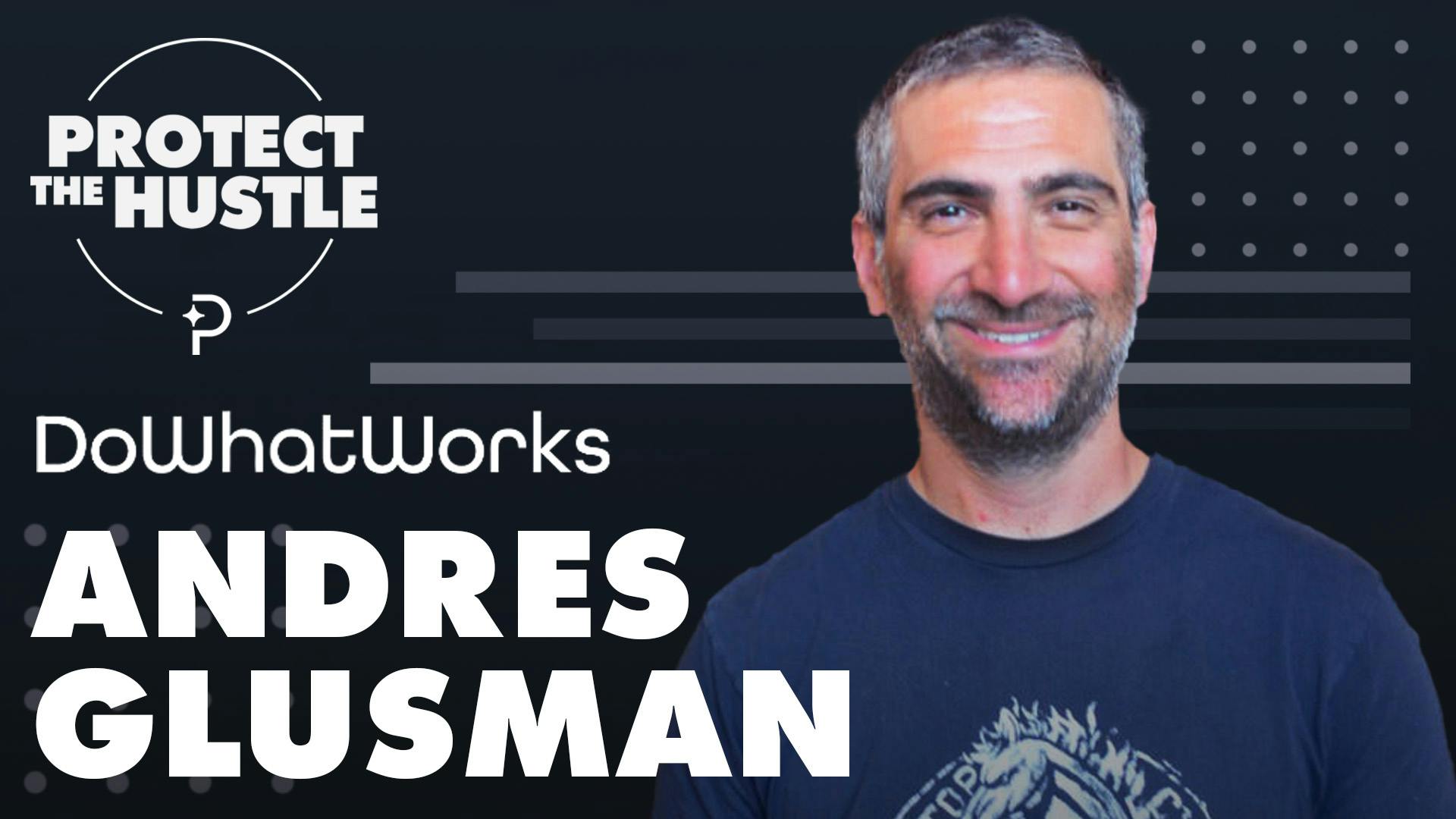
Learning from the Winners with DoWhatWorks' Andres Glusman

Chief Instigator, Dan Martell, on the Power of Authentic Relationships
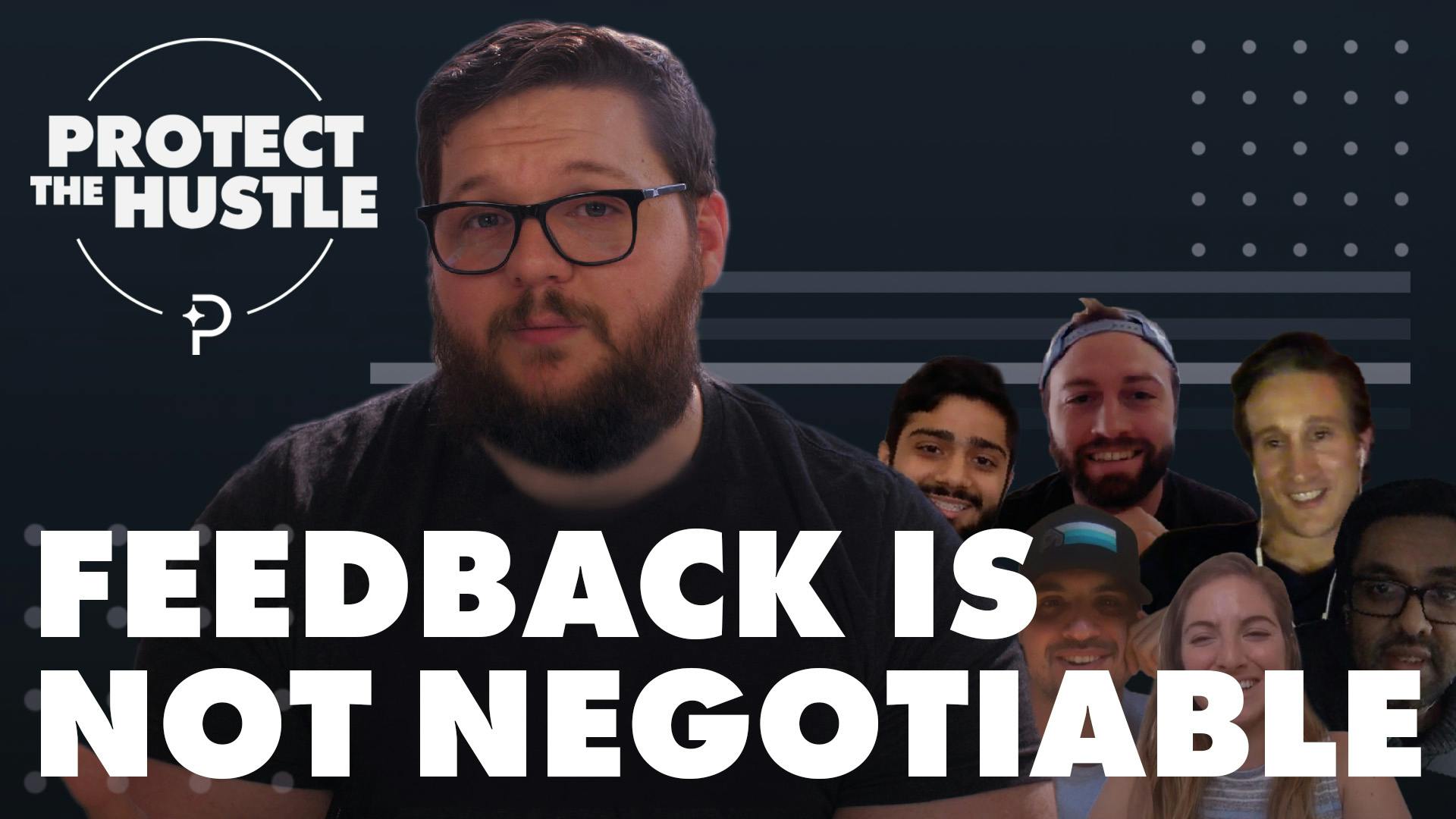
B-Side: HubSpot's Brian Halligan, CrazyEgg's Hiten Shah, the ProfitWell Crew | Feedback is Non-negotiable
